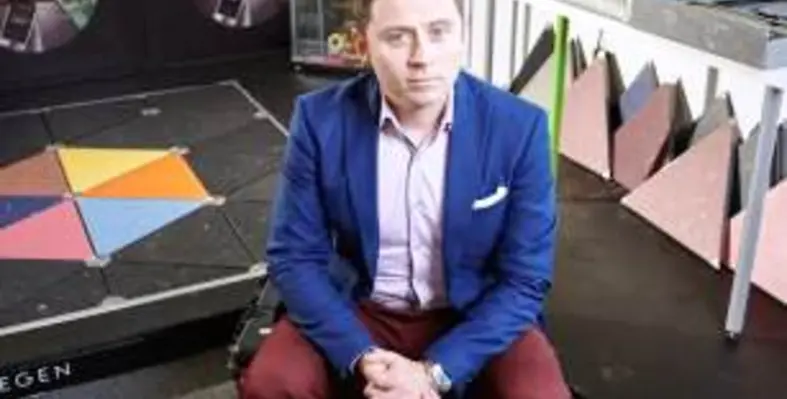An innovative power and data generation technology built on the durability of steel is changing the way our urban environments consider pedestrian foot traffic
As a concept, it is simple. Every day, across cities, airports and other public spaces, millions of people are performing the straightforward task of moving from point A to point B. And these steps can do much more than just move pedestrians ? they can also become valuable electricity and data. Harnessing this untapped resource is what the Pavegen system is designed for.
CEO of Pavegen, Laurence Kemball-Cook, who founded the company in 2009, says, ?The Pavegen system converts the weight of your footsteps into electricity. All you have to do is walk and every step you make can be converted into energy. When we get the energy, we can store it in batteries and use it to power lights in our cities.?
The technology ? known as V3 ? is made up of interlocking triangular tiles that are installed in areas with high pedestrian foot traffic. The tiles are able to produce five watts of continuous power from footsteps, creating an off-grid, localised energy source.
As people step on the tiles, their weight presses them down. Steel-built electromagnetic induction generators at the point of each triangular tile convert this downward force into a rotary motion that generates electricity. Using this method, a single footstep can generate enough power to light an LED lightbulb for roughly 20 seconds.
?The Pavegen system converts the weight of your footsteps into electricity. All you have to do is walk and every step you make can be converted into energy?
Kemball-Cook adds, ?Pavegen works really well where there are lots of people walking, so a city environment ? subways, airports, even stadiums. We typically install the technology at the entrance to buildings, and at busy crossing points and places where people meet in the centre of cities.?
The technology has been through a number of iterations since its initial inception, and V3 generates over 200 times more power than the first model.
The new triangular design maximises energy output and data capture, while its stainless steel corner finishes and hardened steel components make it highly durable. This toughness, combined with its ease of installation, means that Pavegen can offer a reliable and effective decentralised power source.
Material benefits
The unique requirements of the Pavegen system meant that careful decisions had to be made regarding the materials chosen to create it.
?It?s one of hardest engineering challenges in the world to put a product in the ground where there?s going to be significant environmental challenges, such as lots of water ingress,? reveals the CEO.
?Things like wear and durability and environmental performance are vital to our decisions around what material we use and what finishes we apply to those materials. Fatigue resistance is really challenging too, so we had to go through a process that involved lots of testing, lots of material selection, lots of different insights, to allow us to make the product as durable as possible. We try and save costs where possible, but where we need increased performance in the product those components may be steel or they may be stainless steel.?
Pavegen aims for 100 per cent of its product to be recyclable, allowing a fully integrated supply chain and fully reusable system. Infinitely recyclable without any loss of quality, steel plays no small part in helping Pavegen reach this goal.
?Everything we?re doing on the engineering side allows us to build in the highest level of durability and we?ve taken technologies from the automotive and aerospace sectors,? says Kemball-Cook.
?While a Pavegen tile will never get near the billions of cycles of an automotive application, what we can do is increase its life cycle within the technology?s limits, so we can get over 20 years of performance from our product.?
Another key aspect of the Pavegen system is its data collection. The tiles are fitted with wireless sensors that transmit data on pedestrian movement across installation sites. This information can be used to map foot traffic and peak pedestrian flows, allowing for a real-time understanding of movement.
?Smart cities are about seamless connectivity and mobility between people within that city. Sensor networks allow people to get a real-time insight into how a city is performing, and this feeds into tracks and transportation links that make it a lot easier for people to get around,? maintains Kemball-Cook.
?What we offer is a people power solution, a decentralised power solution and also a data hub that can help cities better understand how their people are moving and behaving in those urban environments.?
Pavegen has already delivered more than 150 projects across the world.
? By WorldSteel.org





